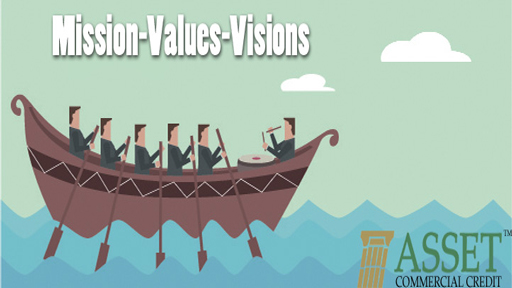These are quite possibly the most misunderstood organizational development components around. Many business owners hear that they are important, but they don’t really know why. They read a little, or remember a course or rely on an employee’s education when they were discussed.
Let’s start with the questions … what are they & why are they important?
A mission statement is a quick outwardly focused statement about what the company does, how they help people, or the purpose of the company. Basically it states why the company exists. It should be as short as possible, clear and focused. Many people try to load the statement with jargon, vision and values because they think it is more sophisticated. They also tend to create a list of all of the products or services that the company does. Avoid all of this! A clear mission is useful in talking with customers, prospects and reduces internal conflict. All employees should have the mission memorized. Once this happens synergy can happen inside the organization.
Values (Statements of Values) are more important and even more misunderstood. First, I’ll start with the “why”. A Statement of Values serves as a foundation for all company decisions. Clearly one can not write procedures for everything. Individuals will have to make many decisions on the fly during the course of operating the business. I like to tell my clients that they do not want to create Enron Values. You might remember that Enron created very nice sounding values, yet their corporate decisions were routinely inconsistent with the values. The process of creating a Statement of Values is almost always more efficient by using a professional facilitator. Otherwise the tendency is to create items that sound good, but are not truly the company’s values. The Statement should focus on 5-7 core statements that are easy to remember. All employees should be able to recite the values (at least in paraphrased form). Management should integrate the Statement of Values into the orderly running of the business.
Vision is a statement of where the company is going, what management wants to accomplish, or what success looks like. Varying complexities can be acceptable, however all employees should understand it. Performance plans should focus on it. Bonus programs should be designed to accomplish it. “Lofty” is good; however the vision must be seen as possible by the employees. President Kennedy’s vision was to put a man on the moon by the end of the decade. Short can be good in that it is easy to remember. It has been said that Pepsi’s vision was to Beat Coke. However the vision needs to be specific enough to bring the employees together for a specific purpose.
Once you create these items and focus your organization, you will be amazed at what petty issues disappear. If you have a strong buy into mission, values and vision, and are still having problems, the next step is to examine the structure or guidance that is imbedded into processes and procedures. This will be the subject of another blog entry.
Bob Stackhouse, President, Asset Commercial Credit
I always suggest the use of an outside professional facilitator to help management with these organizational development objectives. A facilitator can extract ideas and concepts out of key employees, gaining their buy-in. It is a little bit like teaching youth to drive. The quickest and least aggravating experience is to use a driver’s education professional. Children tend to respond differently to a trainer than their parents.
Feel free to contact Us about referrals to a Certified Professional Facilitator that is near you.
